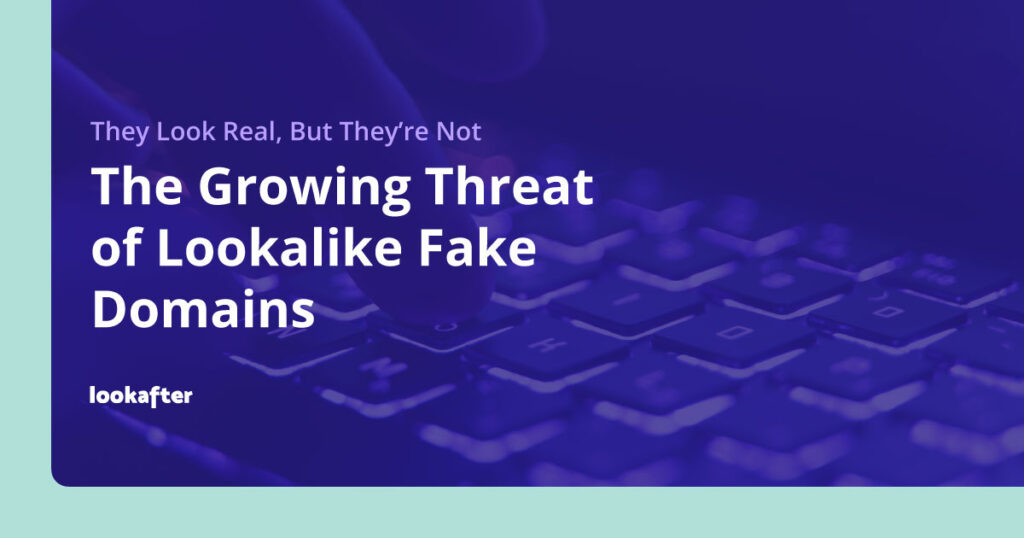Home > Empowering Tips > The Growing Threat of Lookalike Fake Domains

Phishing scams are getting more deceptive than ever. Attackers are now creating fake domains that look almost identical to trusted brands, hoping to trick users into revealing their credentials, banking details, and other sensitive information.
A recent case highlighted this deception: a phishing email campaign using the domain rnicrosoft.com. Attackers replaced the ‘m’ in microsoft.com with the visually similar combination of ‘r’ and ‘n’. At first glance, the fake address looks genuine, leading many users to believe the message came from Microsoft. The email even contained a realistic password reset link that directed victims to a fake login page designed to steal their credentials.
This is a textbook example of a lookalike domain attack — a growing phishing trend that targets businesses and individuals by mimicking trusted brands and legitimate senders.
The Anatomy of Deception: Typosquatting and Homoglyph Attacks
Lookalike domains primarily leverage two techniques:
- Typosquatting: This strategy relies on common typographical errors. Scammers register domains that are just one or two keystrokes off the legitimate address (e.g., gooogle.com instead of google.com). Users who misspell the address in their browser or miss a typo in an email are directed to the fraudulent site.
- Homoglyph Attacks: This is a more subtle form of deception where attackers substitute one or more characters in the legitimate domain with visually similar characters (called homoglyphs) from a different character set. For example, replacing a lowercase ‘l’ with an uppercase ‘I’, or using a Cyrillic ‘a’ that looks identical to the Latin ‘a’.
A Case in Point: The “rnicrosoft.com” Deception
A perfect and recent example of this threat in action involves the exploitation of a simple visual trick targeting a major technology giant.
Scammers have been observed using the domain rnicrosoft.com in email phishing campaigns. To the casual eye, particularly when viewed in a common email client or on a mobile screen, the ‘r’ followed by ‘n’ (rn) in the fake domain is remarkably easy to mistake for the single letter ‘m’ in the legitimate domain, microsoft.com.
These emails, often carrying urgent warnings about account security or a “failed” purchase, appear to come directly from Microsoft. Trusting the sender’s apparent identity, victims are lured into clicking a link, downloading malicious attachments, or entering their credentials on a fake login page, handing over their sensitive data directly to the scammers.
Why the Threat is Intensifying
The proliferation of these fake domains is driven by a few key factors:
- Ease of Registration: Registering a domain name is inexpensive and straightforward, offering a low barrier to entry for cybercriminals.
- Increased Sophistication: Today’s phishing pages are often indistinguishable from the real websites, complete with high-quality logos and up-to-date layouts.
- Digital Fatigue: As we receive dozens of emails daily, users are more likely to quickly scan and click, overlooking minor details in the sender’s address.
How to Protect Yourself and Your Organization
Combating this threat requires vigilance and a layered defence strategy:
- Look Closely at the URL: Before clicking a link or entering credentials, manually inspect the address bar. Look for subtle misspellings, extra hyphens, or unusual character substitutions. If an email seems suspicious, manually type the company’s official address into your browser instead of clicking the link.
- Hover Over the Link: Before clicking a link in an email, hover your mouse cursor over it. The actual destination URL will usually appear in the bottom corner of your browser or email client. Check this URL for any anomalies.
- Enable Multi-Factor Authentication (MFA): Even if you accidentally give up your password on a fake site, MFA provides a crucial second layer of defence, making it significantly harder for criminals to access your account.
- Use a Password Manager: Password managers can often detect when you are on a fraudulent site because the saved credentials will only auto-fill on the exact legitimate domain, providing an instant warning signal.
- Educate Employees: Regular security awareness training emphasizing the danger of lookalike domains is the best defence against social engineering tactics.
I Clicked! What Do I Do Next? Your Emergency Checklist
If you realize you have accidentally clicked a link in a phishing email or have been redirected to a lookalike domain, don’t panic — but act fast. Your immediate response can significantly limit the damage.
1. Disconnect Immediately
Disconnect your device from the internet (turn off Wi-Fi/data or pull the ethernet cable). This stops any potential active data theft, prevents malware from communicating with the attacker’s server, and halts any remote access attempts.
2. Change Compromised Passwords
Use a separate, clean device (like a trusted smartphone not on your home network) to change the password for the account the email was trying to access (e.g., your Microsoft account, if the scam used rnicrosoft.com).
Use a strong, unique password. Change any other accounts that share that same password.
3. Contact Financial Institutions
If you entered any credit card, bank, or other financial details, call your bank immediately. They can freeze or monitor your account for fraudulent transactions and issue new cards.
4. Run a Full Antivirus Scan
Reconnect to the internet and immediately run a full, deep scan of your device using your reputable anti-malware software. This detects and removes any malicious files (malware, spyware, or keyloggers) that may have been silently downloaded when you clicked the link.
5. Report the Incident
Notify your IT department (if at work) or forward the suspicious email to the real company’s fraud/phishing reporting address. This protects other users and provides the legitimate company with intelligence to shut down the malicious domain.
Wrapping Up
The lookalike fake domain is a clear and present danger in the digital landscape. As the ‘rnicrosoft.com’ example demonstrates, the margin for error is often just a single keystroke.
By slowing down, paying attention to the details, and adopting robust security practices, we can effectively turn the tide against these master illusionists of the internet.